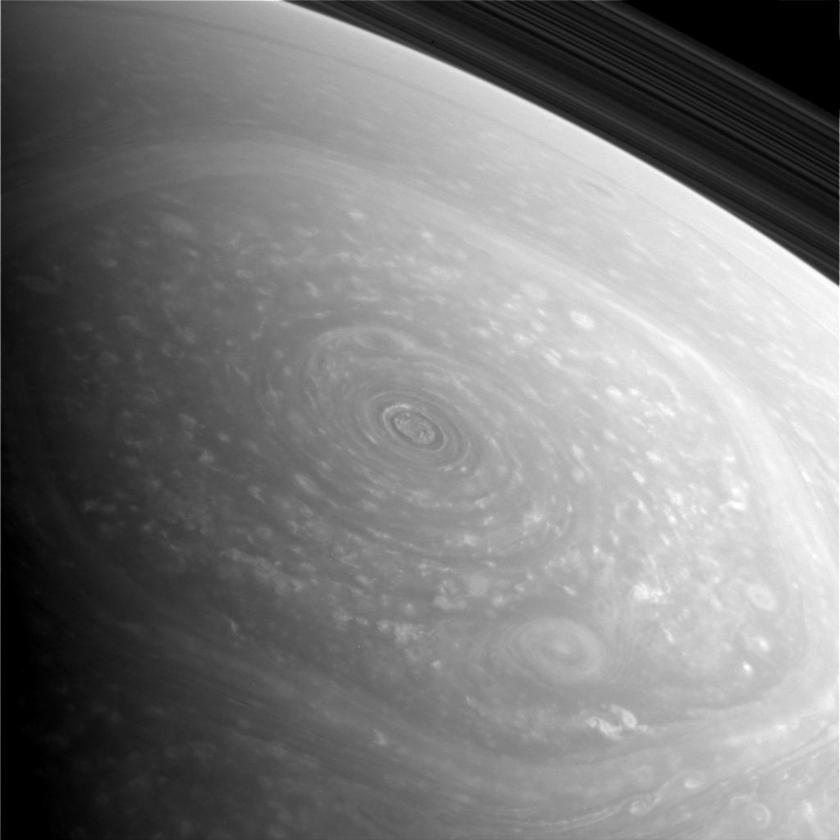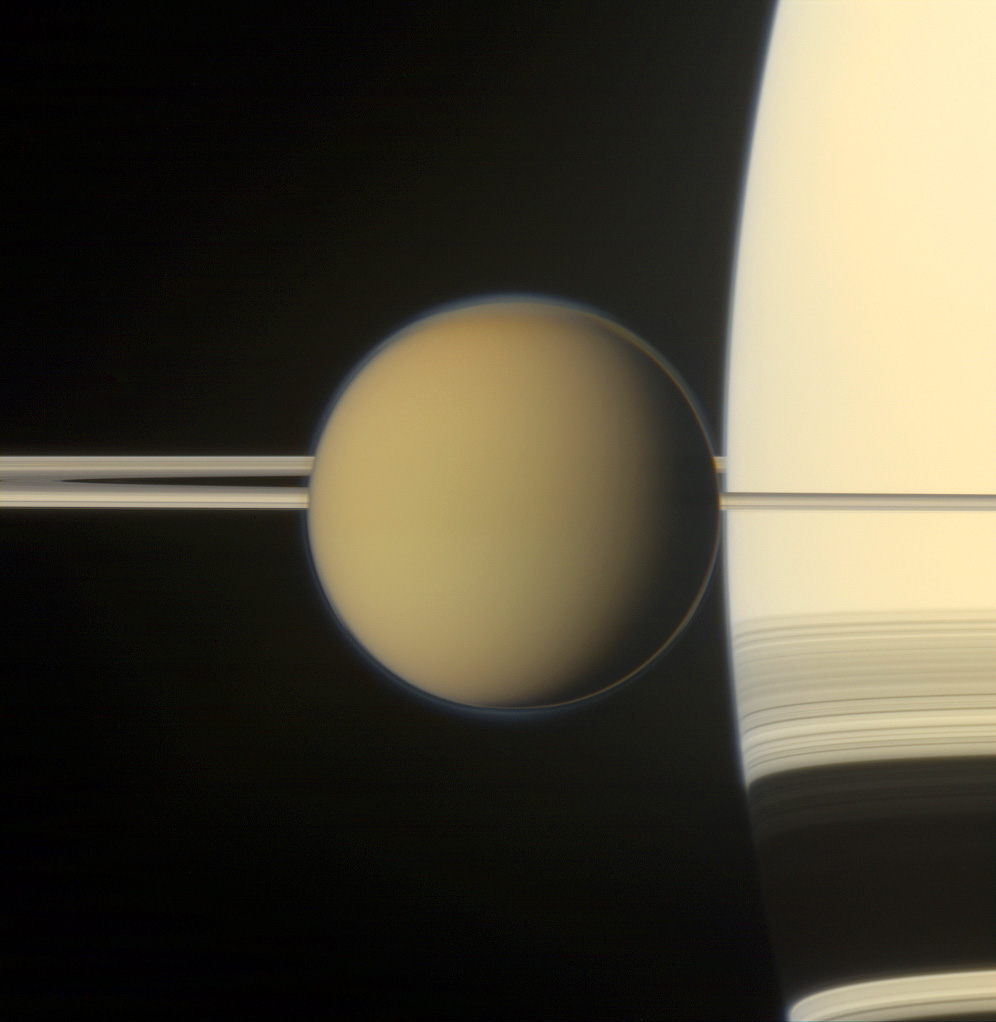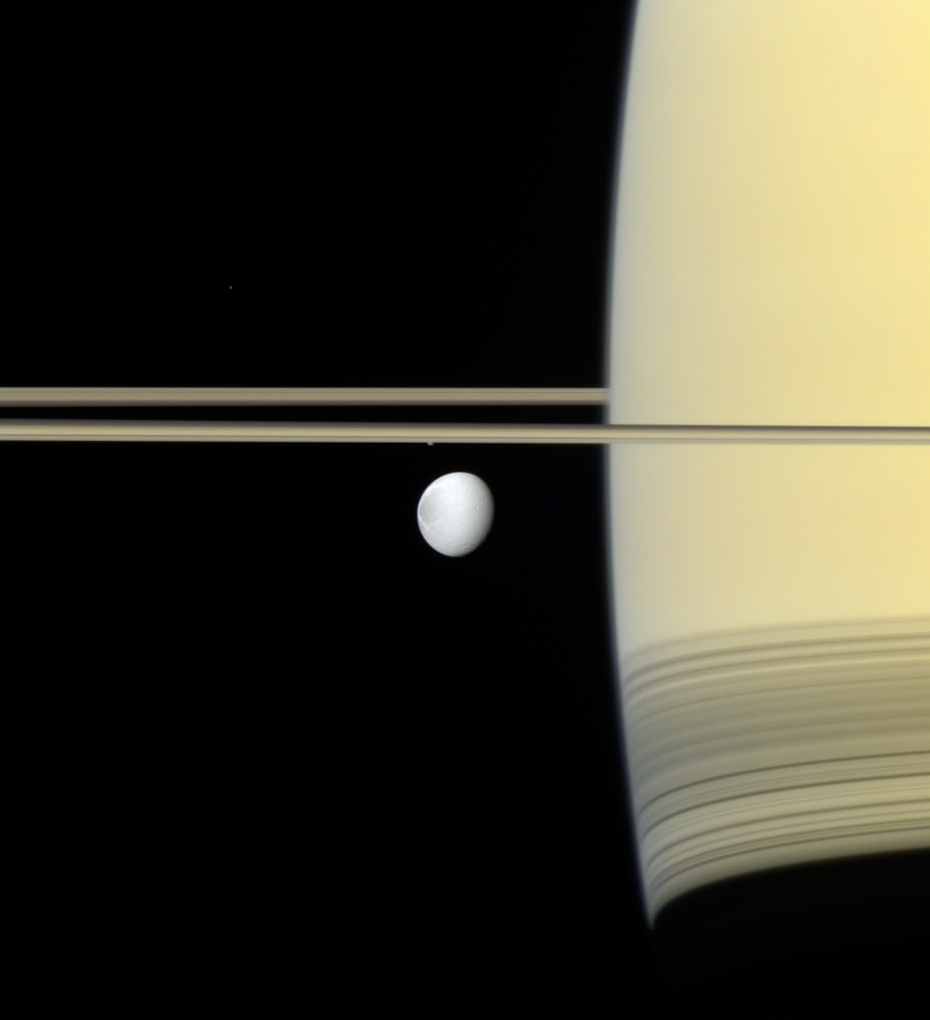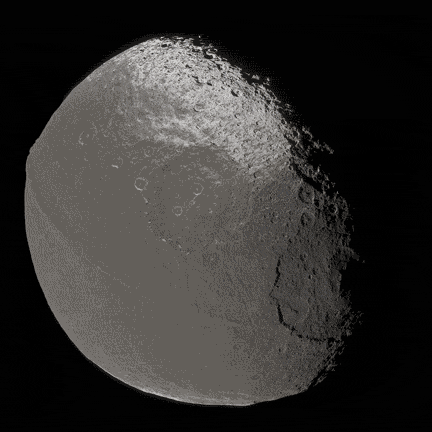Around Saturn from fabio di donato on Vimeo.
In Saturn’s Rings Official Trailer
The long awaited official trailer for “In Saturn’s Rings” has been unleashed. Looking forward to this film for over three years now.
Outer Space Art Film Uses Only Raw Images
Outer Space from Sander van den Berg on Vimeo.
The Hexagonal Saturn Storm
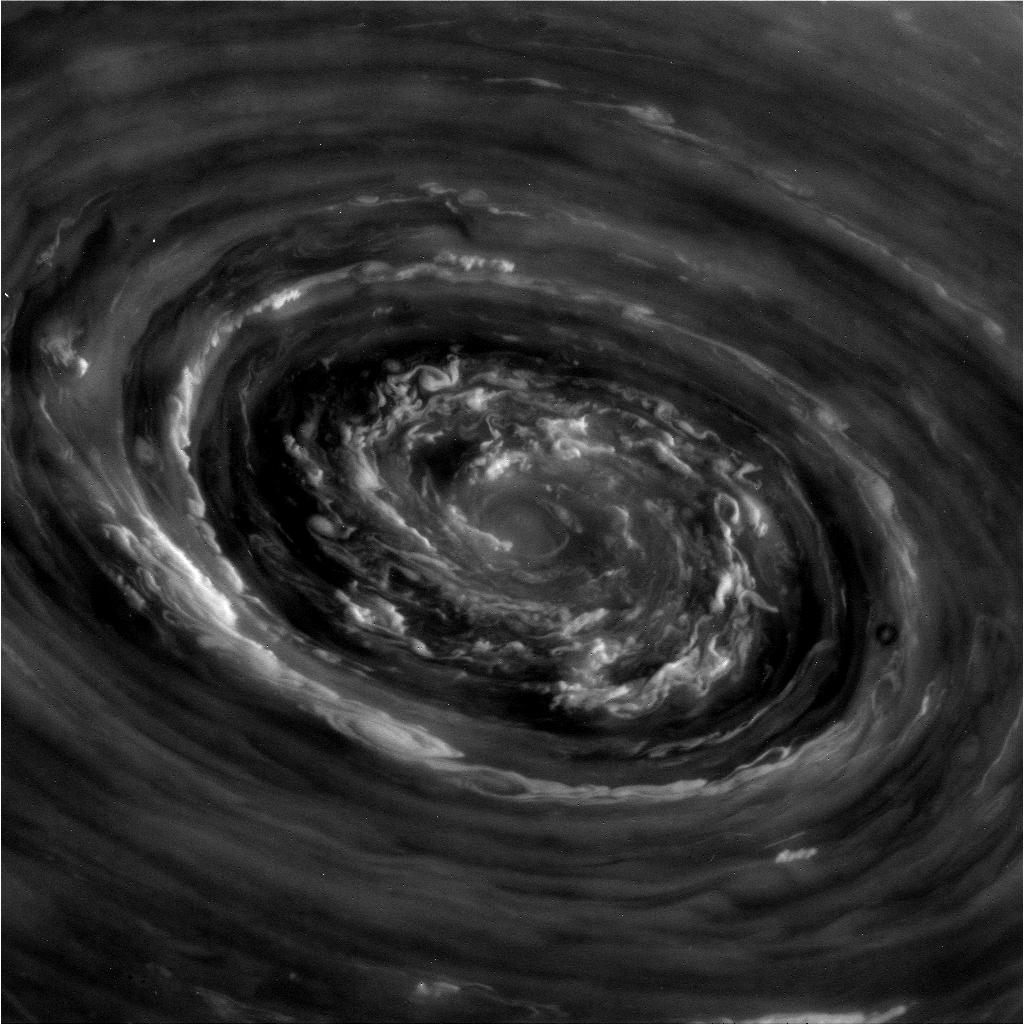 This is a raw image of the storm found at the center of Saturn’s hexagonal feature located at it’s northern pole (see below). Be sure to click on it for the high-res.
This is a raw image of the storm found at the center of Saturn’s hexagonal feature located at it’s northern pole (see below). Be sure to click on it for the high-res.
The image is going to be “officially released” soon, but I don’t know how much better it can get than this. One of the exciting things about this storm is the depth that we are allowed to see into Saturn. There is no other feature on Saturn that allows us to see any further than the cloud tops.
Saturnati XXIV
Best of G. Ugarkovic (Last 8 Months)
If you follow this blog on any basis, you might be well aware that a good percentage of the imagery is provided by our good flickr friend Gordan Ugarkovic. Here is a bit of what we missed from him in the last 10 months we were locked out.
Titan at the edge of Saturn taken 2011-05-21. Looks unreal. Like Titan was dropped into the scene using Photoshop. A sin I would never commit. See the lesser “official” NASA version released a few months back here.
Keeping with the theme of moons transiting Saturn. Here is Rhea and tiny Epimetheus doing what they do. Taken in 2010-03-24.
Finally, just to change it up… two moons against Titan, another of Saturn’s moons. Pictured above the Titanian cloud-tops is Dione on the left and Rhea on the right.
Saturn’s Five
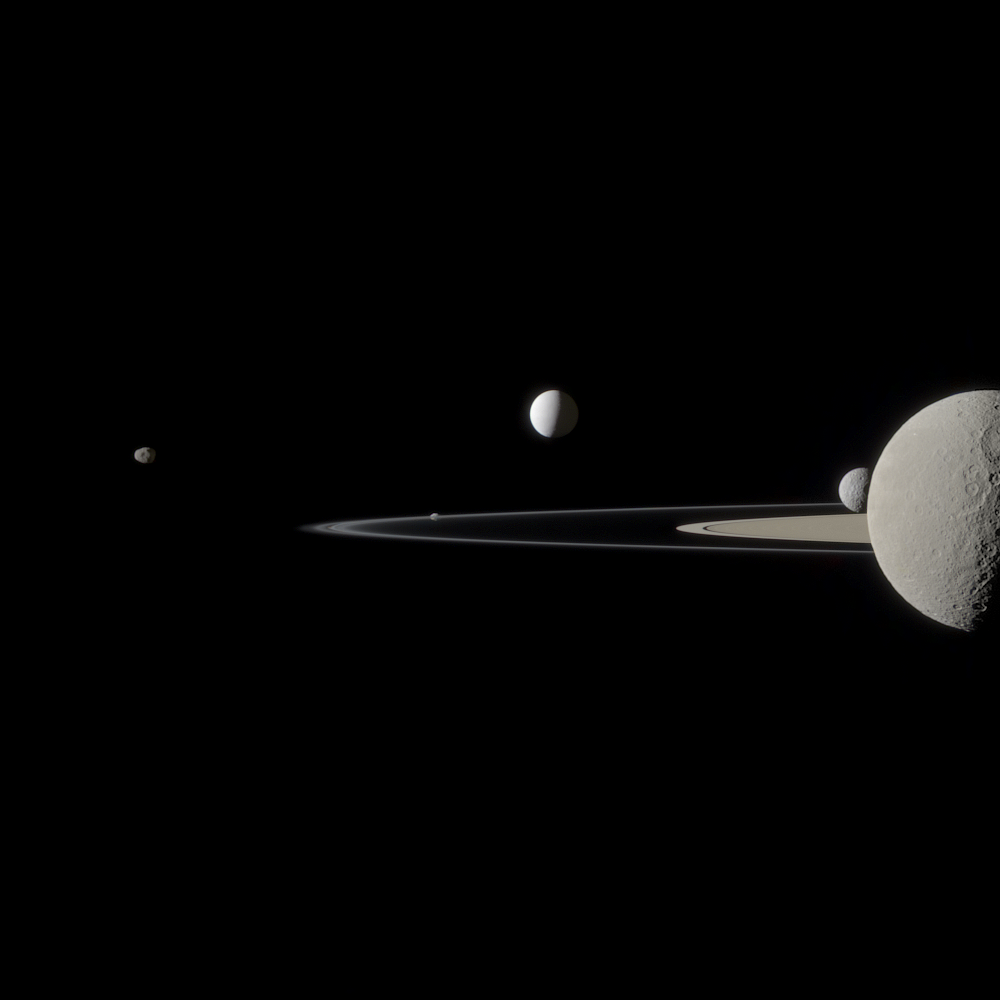 Space enthusiasts seem to really like shots that have more than one body in the same frame. How about five… or six (if you count the rings of Saturn)? Starting left to right that is Janus, Pandora, Enceladus, Mimas and Rhea.
Space enthusiasts seem to really like shots that have more than one body in the same frame. How about five… or six (if you count the rings of Saturn)? Starting left to right that is Janus, Pandora, Enceladus, Mimas and Rhea.
Thanks again to Gordan Ugarkovic.
Titan’s Polar Vortex
 Only a true lover of planetary exploration can get excited about an image like this. Titan is definitely one of the most exciting places in the solar system despite it’s almost total lack of discernible details either surface or in cloud structure. So like Uranus and Venus most images of these locales look something like smooth monochromatic tennis balls without the white lines.
Only a true lover of planetary exploration can get excited about an image like this. Titan is definitely one of the most exciting places in the solar system despite it’s almost total lack of discernible details either surface or in cloud structure. So like Uranus and Venus most images of these locales look something like smooth monochromatic tennis balls without the white lines.
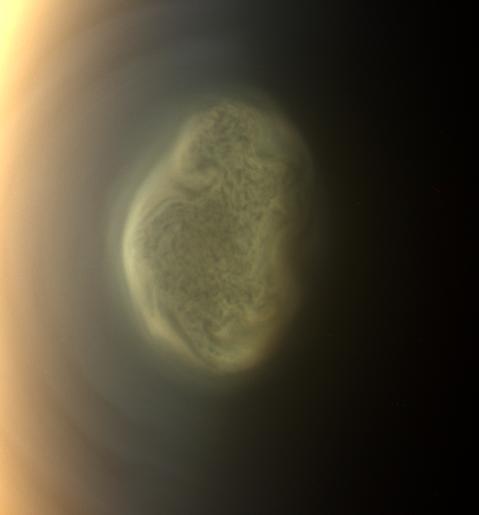
Above is a color image of the vortex in more detail. Scientists are still unsure of the process that causes this to occur. However, similar phenomenon have been seen before — most notably on Titan’s parent planet, Saturn.
Titan and Friends
Titan and friends from recent official Cassini mission releases.
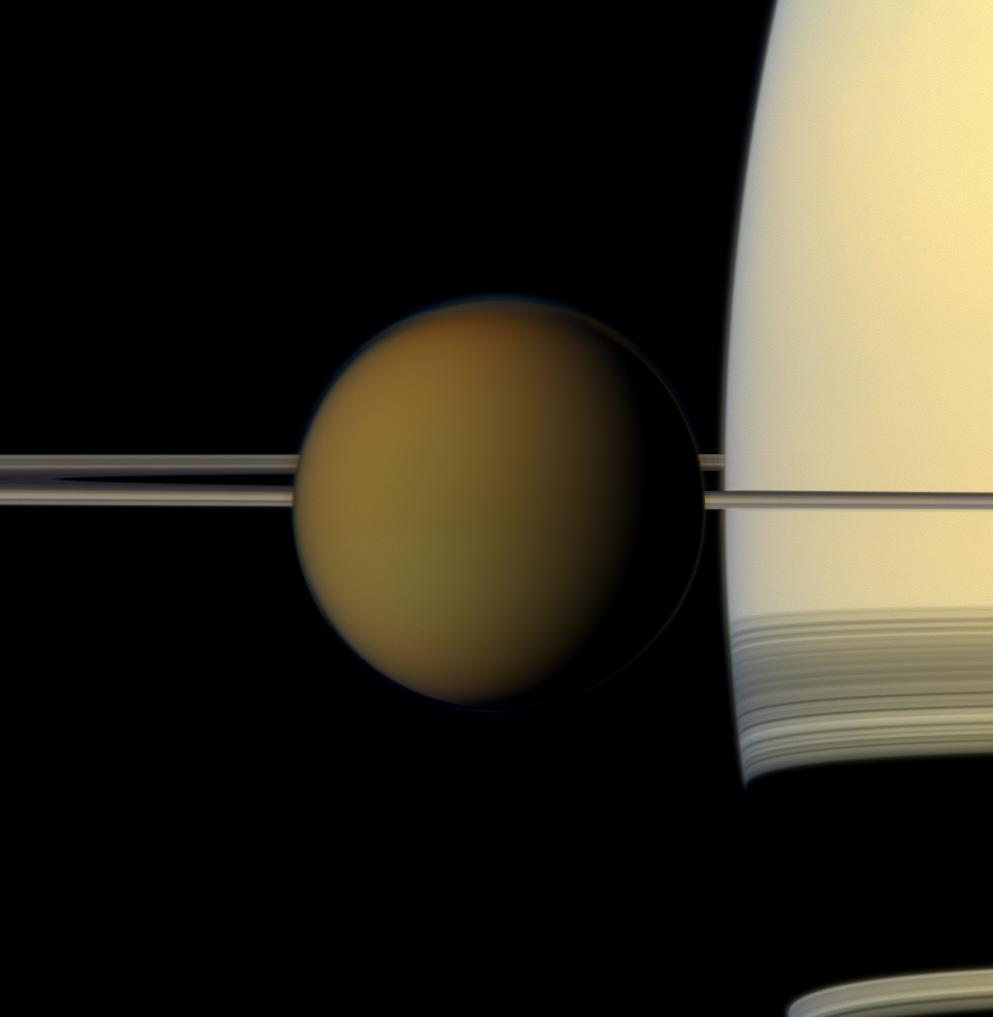
Shown with Saturn
Shown with Dione against a Saturn and rings nearly edge-on in the background. Looks like a NASA re-interpretation of this image.
With Tethys against more edge-on rings.
You Are the Center of the Solar System
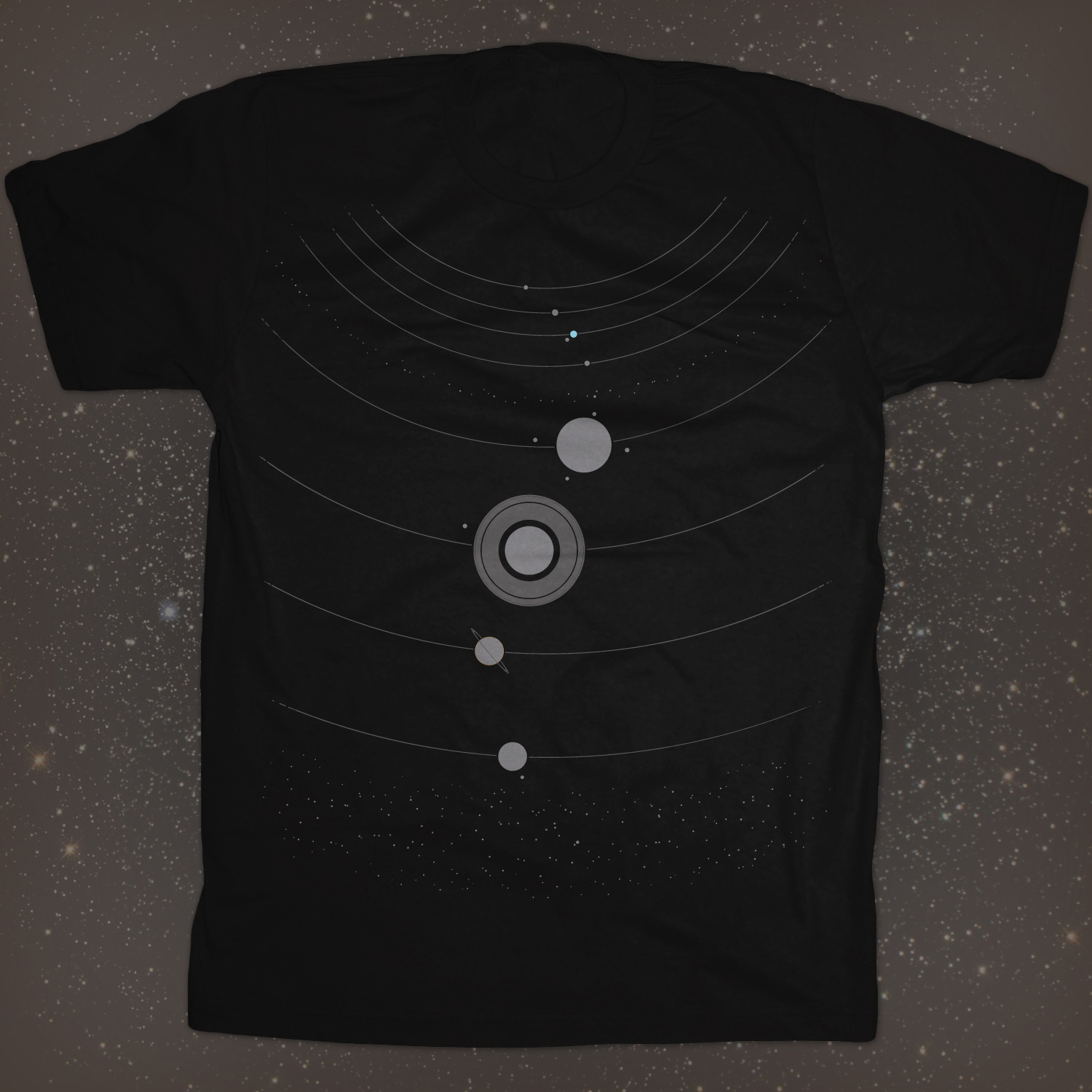 You Are The Sun is the latest space themed tee by Chop Shop Store. Following on iconic tees that collected various deep space missions and historic Earth orbit missions, this new design draws a new picture of The Solar System as we know it today, complete with Carl Sagan’s pale blue dot.
You Are The Sun is the latest space themed tee by Chop Shop Store. Following on iconic tees that collected various deep space missions and historic Earth orbit missions, this new design draws a new picture of The Solar System as we know it today, complete with Carl Sagan’s pale blue dot.

With your head as a stand-in for The Sun — the tee includes all 8 planets, 7 major moons, The Asteroid Belt and even details little Pluto lost among countless Kuiper Belt objects. We are now providing yet another link here to get it for Men on American Apparel 2001 or Tultex tees and for Women on American Apparel 2102 tees.
Dione and Saturn
Saturn Cloudtops and The Fountains of Enceladus
 Wow. That is quite a mutual event. Saturn crescent haze about as dramatic as it is ever seen by Cassini but with the addition of an active Enceladus hanging above at such a scale is quite unreal. Color by Gordan Ugarkovic.
Wow. That is quite a mutual event. Saturn crescent haze about as dramatic as it is ever seen by Cassini but with the addition of an active Enceladus hanging above at such a scale is quite unreal. Color by Gordan Ugarkovic.
Saturn Portrait Rings Unlit
 We have had our share of global Saturn portraits, but I do believe this is the first taken where the rings are unlit by the sun. An interesting alternate view provided by Gordan Ugarkovic (as usual).
We have had our share of global Saturn portraits, but I do believe this is the first taken where the rings are unlit by the sun. An interesting alternate view provided by Gordan Ugarkovic (as usual).
Helene Offers a New Mystery
 The tiny moon Helene seems to be experiencing some kind of erosion based on new hires images acquired by the Cassini mission in orbit around Saturn. If this is true, this would be quite a mystery considering the moon’s tiny mass and almost total lack of any gravitational ability to shape it’s own surface. Surely this must be coming from external forces such as ring particles being dumped on the surface in one area and then slowly being shaken downslope by small impacts over a very long time. Maybe?
The tiny moon Helene seems to be experiencing some kind of erosion based on new hires images acquired by the Cassini mission in orbit around Saturn. If this is true, this would be quite a mystery considering the moon’s tiny mass and almost total lack of any gravitational ability to shape it’s own surface. Surely this must be coming from external forces such as ring particles being dumped on the surface in one area and then slowly being shaken downslope by small impacts over a very long time. Maybe?
Another color composite by Gordan Ugarkovic.
And a bonus Helene crescent image with posterization effects removed by Wanderingspace.
A New Work of Art
 We may have a new best of Cassini shots with this one. The color composite was executed by Ian Regan who was the creator of another Cassini favorite here at wanderingspace.
We may have a new best of Cassini shots with this one. The color composite was executed by Ian Regan who was the creator of another Cassini favorite here at wanderingspace.
The Cassini Mission in Stark B&W
CASSINI MISSION from Chris Abbas on Vimeo.
Gorgeous idea — taking the raw images from the Cassini mission and making a long flip-book style movie. Leaving in the flaws and noise of raw images happens to add a nice stylistic touch to the overall feeling of the film. The nature of multiple images taken by the spacecraft often with large and small gaps in time coincidentally makes some engaging jumpy into smooth segments.
The Plumes of Enceladus
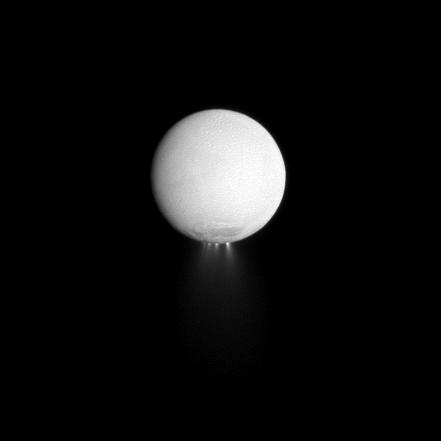 This is the best lit image taken of the plumes of Enceladus thus far by Cassini. The moon is lit from the front by Saturnshine and the plumes are being back-lit by the Sun directly behind. A perfect alignment for revealing active geysers on a small moon.
This is the best lit image taken of the plumes of Enceladus thus far by Cassini. The moon is lit from the front by Saturnshine and the plumes are being back-lit by the Sun directly behind. A perfect alignment for revealing active geysers on a small moon.
Saturn Still Images Come to Life
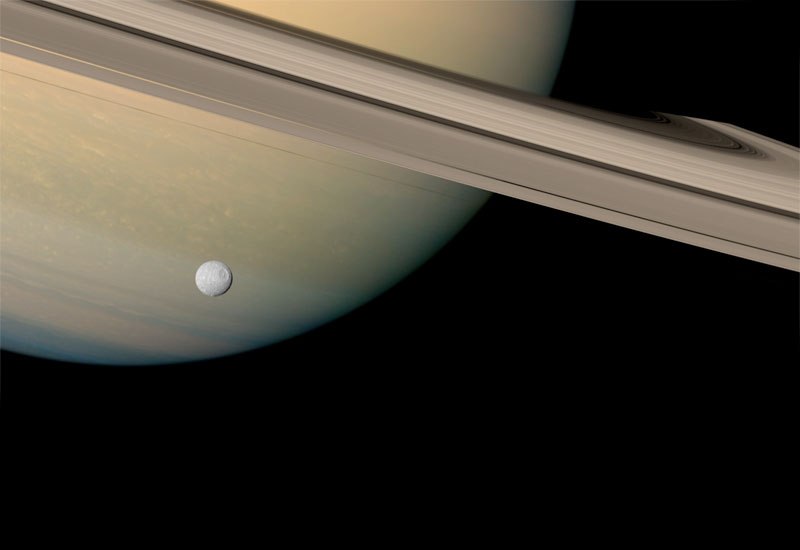 If you haven’t followed the work of Stephen v2 and his film “Outside In”, you might want to take a look at what he has in store for us. Using only still images from the Cassini mission, Stephen is making a very impressive tour of the Saturn system without using any CGI, 3D models or textures. While those techniques make great Hollywood films they often fall short of making something that is actually a real place… look real. See below for a very brief clip of how this all ends up looking with a much better and longer clip coming in the near future.
If you haven’t followed the work of Stephen v2 and his film “Outside In”, you might want to take a look at what he has in store for us. Using only still images from the Cassini mission, Stephen is making a very impressive tour of the Saturn system without using any CGI, 3D models or textures. While those techniques make great Hollywood films they often fall short of making something that is actually a real place… look real. See below for a very brief clip of how this all ends up looking with a much better and longer clip coming in the near future.
from New "Outside In" clip teaser from stephen v2 on Vimeo.
Prometheus Looking Dramatic
 This is one of the tiny moons of Saturn seen up close around Jan 27, 2010 by Cassini. In case you do not recall, it is the moon responsible for some of the best ring disturbance movies of the mission.
This is one of the tiny moons of Saturn seen up close around Jan 27, 2010 by Cassini. In case you do not recall, it is the moon responsible for some of the best ring disturbance movies of the mission.
